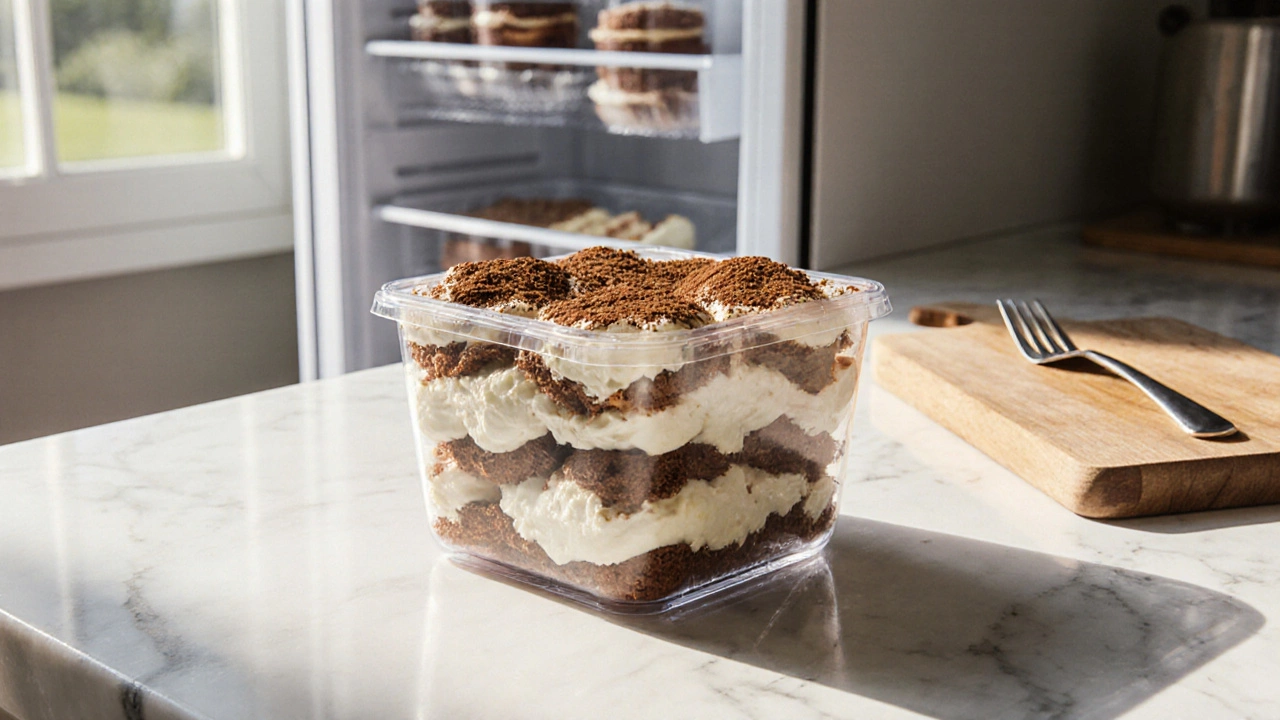Can You Freeze Ready‑Made Desserts? A Tiramisu Freezing Guide
Learn how to safely freeze tiramisu and other ready‑made desserts, keep texture intact, and serve them perfectly after thawing.
When working with Freezing Desserts, the process of preserving baked sweets by storing them at sub‑zero temperatures. Also known as Dessert Freezing, it helps you save leftovers, prep ahead for events, and reduce waste. how to freeze desserts is a skill anyone can master with the right tools and a bit of know‑how. The key is to treat each sweet like a small project: pick the right container, control the freezer temperature, and plan for thawing. This approach links the central idea of freezing desserts with three supporting concepts—Dessert Storage, methods and containers used to keep sweets safe in the freezer, Freezer Temperature, the actual degrees inside your freezer, usually between –18 °C and –20 °C, and Shelf Life, how long a frozen dessert stays at peak quality. Understanding how these entities interact makes the whole process easier and more reliable.
First, packaging matters. Airtight containers, zip‑lock bags, or parchment‑wrapped layers keep air out and stop freezer burn. When you seal a cake slice or a batch of cookies, you’re directly influencing texture preservation—one of the biggest challenges in dessert freezing. Second, temperature consistency is a must. A freezer that drifts above –18 °C can cause ice crystals to form, which later turn into soggy spots once thawed. That’s why many home bakers install a thermometer and aim for a stable –20 °C setting. Third, timing is everything. Most cakes, pies, and pastries keep their best flavor for 2‑3 months; delicate items like mousse or whipped‑cream desserts should be eaten within 1‑2 months. These time frames create a clear link: Freezer Temperature influences Shelf Life, and proper Dessert Storage ensures the original texture stays intact.
Now that you’ve got the basics, you can start experimenting with your favorite sweets. One common question is how to thaw without ruining the crumb. The answer is simple: move the dessert from the freezer to the refrigerator and let it sit for a few hours, or use a low‑heat oven for pies that need a quick warm‑up. Another tip is to label each package with the freeze date and type of dessert—this small habit saves you from guessing what’s still good. Below you’ll find a curated collection of articles that dive deeper into each of these steps, from choosing the right container for a layered cake to the science behind ice crystal formation in custards. Each piece adds a layer of practical insight, so you can confidently preserve everything from macaroons to chocolate mousse and enjoy them whenever the craving hits.

Learn how to safely freeze tiramisu and other ready‑made desserts, keep texture intact, and serve them perfectly after thawing.